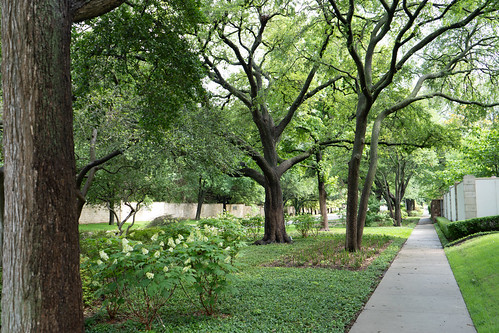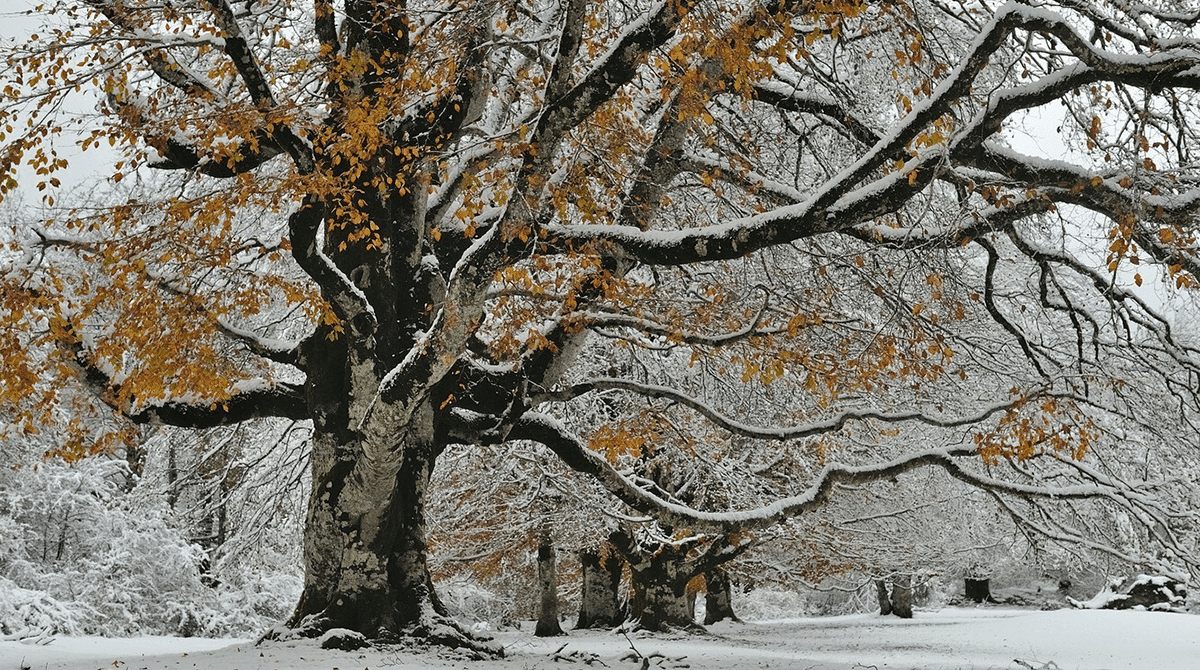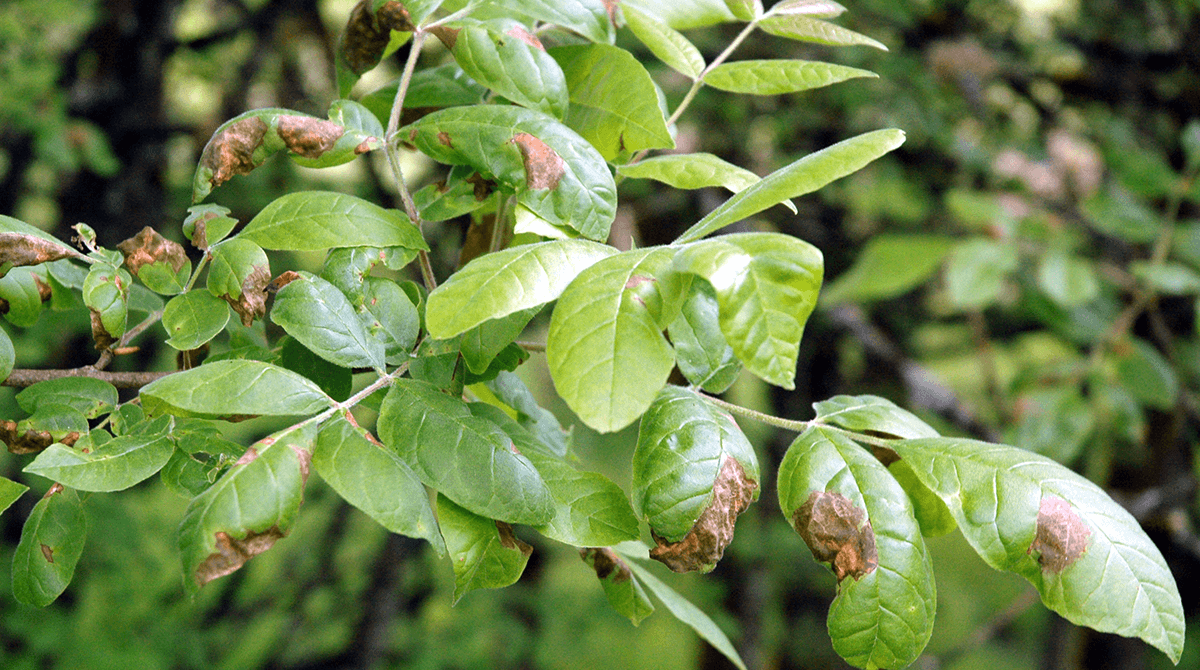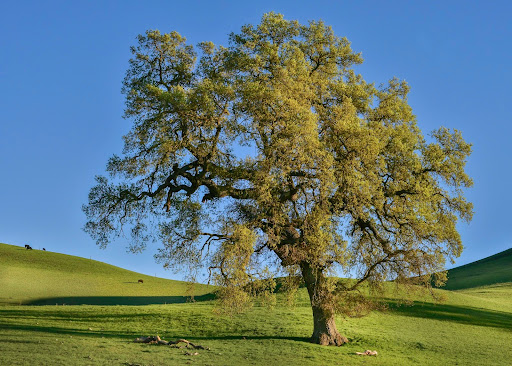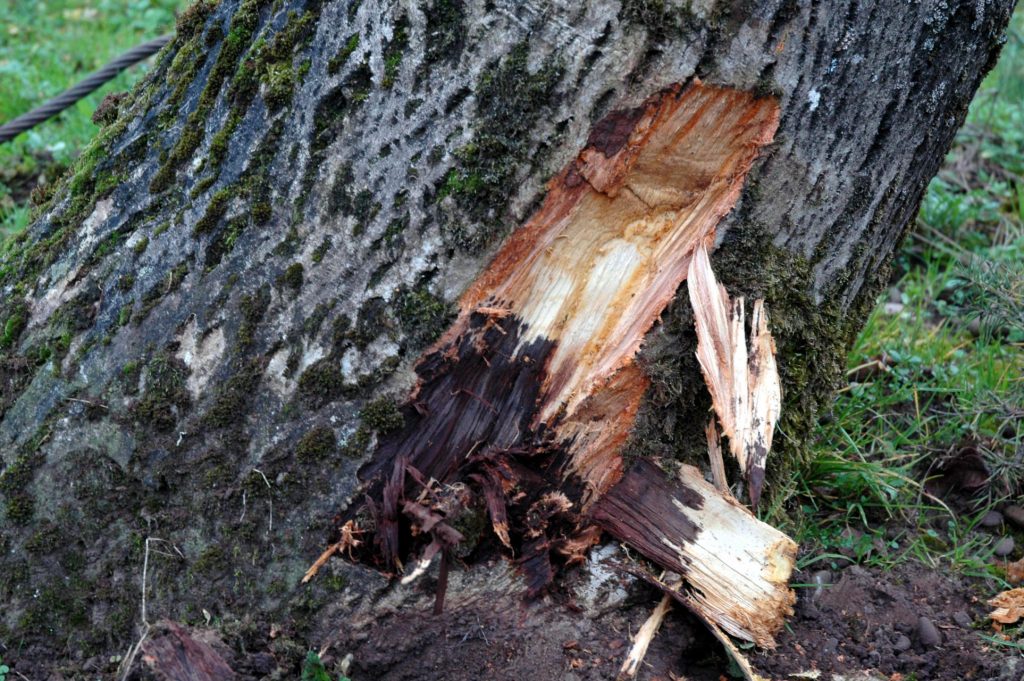
Root Rot of Texas Trees
Date November 09, 2021
Category
So much of what happens within our gardens occurs out of sight, and pesky root rot is no different. Thankfully, you can manage and even prevent the disease from spoiling your garden with a bit of awareness. Here we’ve gathered some info to help keep your nerves calm and guide you through the best practices for what may be afflicting your Texas trees.
What Is Root Rot
Root rot is the infection and destruction of the roots of plants due to extremely ruinous bacteria. Most types of root rot are due to an overabundance of moisture in the ground, “drowning” the plants and cultivating bacteria designed to attack the tree roots and permeate the surrounding soil. The disease can be dormant for as many as 20 years before showing signs of its presence in the visible parts of the plant.
Root Rot of Texas
The most common type in North Texas is Phymatotrichum omnivorum, aka Cotton root rot. Its visible spores resemble the appearance of cotton growing on affected soil and plant trunks, particularly observable when the humidity has been high. The prevalence of patches where cotton was once grown here in North Texas and the high presence of the cotton-like fungi has also been called Texas root rot. Clay soils with an elevated pH level of 7.0-8.5 are common in the metroplex and very conducive to the lifecycle of the fungus. Over 2000 species of plants are affected by this soil-borne disease. Bradford pear and apple trees are especially vulnerable, as the pathogens prefer deciduous and fruit trees. Typically brought on by very high temperatures, it’s no surprise how susceptible Texas is to these nasty pathogens. They most often flare between the sweltering summer months of June and September when soil is at its peak temperatures.
Symptoms of Root Rot
If Cotton root rot is afflicting your garden, again, you will see cotton-like spores growing on the tree trunk or the surface of the nearby soil. Unexpected discoloring of leaves, especially yellow and brown, may indicate subsequent wilting. However, if the plant has already reached the wilting stage, the entire root system is likely affected, and it may be too late to save the plant from swiftly dying soon after. Even then, plants may unexpectedly die before you see the wilting, going straight to turning a crisped brown or black.
How to Treat Root Rot
Unfortunately, there is no cure for root rot, but tree disease management may be possible depending on the extent of rot with which you are dealing.
・Potent fungicides applied directly to the earth may help kill the existing fungus and prevent further spread.
・If aware of rot-inducing bacteria in your soil when planting new greenery, your best chance may be to add resistive types of mycorrhizae (supportive symbiotic fungi) such as Bacillus subtilis or Gliocladium virens to root systems before planting, which will help both treats and stave off the fungus.
・With small plants and shrubs not yet overwhelmingly stricken, prune the dead portions to protect the rest of the plant. If a potted plant has been affected, remove it from its pot, prune the fungus and soft rot, and re-pot with an improved drainage system.
・Solarization may naturally sterilize affected soil. For this method, layer plastic over the ground so that the sun’s rays will increase the trapped heat and thus kill much of the covered bacteria underneath. Keep in mind, however, that this practice will also neutralize the co-existing good microbes.
・If you are environmentally conscious, be aware there are very few organic options of anti-rot; the vast majority are chemical-based, and even then, such fungicides may only work scantly in many cases.
However, if your plant is already in the process of dying, there is little you can do to revive the original. Instead, professional tree care experts recommend you may opt to collect some cuttings from the still healthy parts and, using standard practices, re-plant your hardy cuttings in a fresh, unaffected area to start anew. This may also be the perfect opportunity to try out some of TreeNewal’s preventative tips below!
How to Prevent Root Rot
・Provide the Right Conditions
Optimizing the drainage of your land will be the best place to start with root rot disease prevention. Ensure that water does not pool or stand anywhere and that you are not overwatering your greenery. Any potted plants will need to be re-potted in a drainage-friendly container with vents at the base if suspended or with a very watchful eye if sitting on a plate.
・Encourage Soil Acidity
Cotton root rot thrives in alkaline soil. Generously use acidic organic material such as compost and sphagnum peat when landscaping to help keep the organisms at bay.
・Select Naturally Repellant Plants
A plethora of plants has a natural immunity to many root rot-causing germs. Pecans, cedar elms, mesquites, nandinas, magnolias, hollies, sycamores, junipers, crepe myrtles, liriope, and many various ornamental tree species stand the best chances of avoiding the issue of root rot fungus altogether.
When You Need an Arborist
Surface-level symptoms can be easy to assess the presence of root rot, but determining the particular type and extent of rot will likely be very difficult for the inexperienced. Such information can be critical to determining the best course of action to slow the advancing damage. For example, established trees take longer to become infected, so quick action to enlist the expertise of certified arborists at the first sighting of discoloration in your larger plants is imperative to mitigate the spread of disease.
If you need Texas root rot treatment from professional tree care experts, don’t hesitate to drop a line to the ISA-certified arborists at TreeNewal for tailored tree care advice.
To learn more about Root Rot of Texas Trees, call our Argyle and Southlake-based teams
at tel:(817) 592-6846 or send us a message.
We’re a little different than the average tree services company.
Learn more about TreeNewal’s ISA Certified Arborists!
Our Dallas/Fort Worth-based tree doctors can explain how sustainable tree care services add more value to your bottom line.
Healthy trees, healthy lives.
